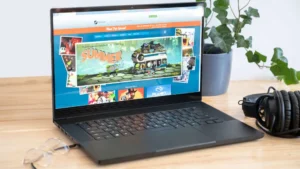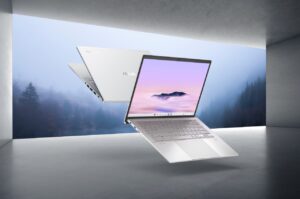Buying a used laptop is often a smart financial choice. You can save a lot of money compared to buying new equipment, while still getting a machine that meets your needs. Whether you’re a student on a budget or someone looking for a second computer, a used laptop can be a great value.
Benefits of buying a used computer
Cost savings: Used laptops are much cheaper than new laptops.
Environmental impact: Reusing technology helps reduce e-waste.
Immediately available: Often immediately available for purchase without having to wait for new models to be released.
Determine your needs
Define your usage requirements
Before you dive into the buying process, it’s crucial to understand what you’re looking for in a laptop. Are you looking for a machine for basic tasks like browsing and word processing, or do you need more power for gaming or video editing? Clearly defining your needs can help you narrow down your options.
Set a budget
Determine how much you are willing to spend. Setting a budget will not only guide your search but also prevent you from overspending. Take into account any additional costs, such as possible repairs or upgrades.
Research laptop models
Popular brands of used laptops
Some brands are known for quality and durability. Consider looking at models from brands like Dell, Lenovo, HP and Apple. Research their reliability and performance based on user reviews and expert opinions.
Compare specifications
Once you have a few models, compare their specs. Key factors to consider include processor type, RAM size, storage capacity, and graphics capabilities. This way you can determine which laptop best suits your needs.
Where to buy used laptops
online marketplace
Websites like eBay, Craigslist, and Facebook Marketplace are popular places to buy used laptops. These platforms offer a wide range of options, but it is important to be careful and verify the credibility of the seller.
Renovated electronics store
Stores that specialize in remanufactured electronics often offer warranties and guarantees, which can add an extra layer of security to the product you purchase. Check out reputable online retailers or local stores.
Local retailers and classifieds
Local computer stores and classifieds are also good sources for used laptops. These options may allow you to personally inspect the laptop before purchasing it.
Evaluate laptops
Check physical condition
Check the laptop for any physical damage, such as scratches, dents, or cracks. Note the condition of the hinges and gates. A well-maintained laptop is likely to be in better condition.
Check screen and keyboard
Check the screen for dead pixels, discoloration, or backlight problems. Test your keyboard to ensure that all keys work properly and that no keys are stuck or missing.
Test the battery life
Battery performance is critical. Test how long the battery lasts when fully charged. Please note that older batteries may not take as long to charge as new batteries.
Evaluate ports and connectivity
Make sure all ports (USB, HDMI, etc.) and connection options (Wi-Fi, Bluetooth) are working properly. This is essential for using peripherals and connecting to networks.
View laptop specifications
Processor and RAM
The processor (CPU) and RAM (memory) determine the performance of a laptop. Most tasks require the latest generation processor and at least 8 GB of RAM. Gaming or heavy multitasking requires higher specifications.
Storage options
Consider the type and size of storage. Solid State Drives (SSDs) offer faster performance compared to traditional hard disk drives (HDDs). Determine the storage space you need based on your usage.
Graphics and display quality
If you plan to use your laptop for gaming or graphic design, check the graphics card and screen resolution. Dedicated graphics cards are better suited for intensive tasks.
Check laptop history
Inspect repairs and changes
Ask the seller if the laptop has undergone any repairs or adjustments. A history of frequent repairs may indicate a potential problem.
Please confirm the original purchase date
Knowing the original purchase date can help you determine the age and potential lifespan of your laptop. This information can also help you determine if your laptop is still under warranty.
Proof of ownership required
Ask for documentation or proof of ownership to be sure
e The laptop model you are interested in. This allows you to negotiate a fair price based on the condition and specifications of the laptop.
be ready to walk away
If the seller won’t negotiate or the laptop doesn’t meet your expectations, be prepared to walk away. There are many more options to choose from.
Check the warranty and return policy
Manufacturer’s warranty
Check whether the laptop is still covered by the manufacturer’s warranty. This can give you peace of mind and solve potential problems.
Seller’s Return Policy
If you buy from a store or online retailer, check their return policy. A good return policy allows you to return a laptop if it does not meet your expectations or has hidden defects.
Make sure your purchase is safe
means of payment
Use a secure payment method, such as a credit card or a trusted payment service, to protect yourself from fraud. Avoid cash transactions where possible.
Receive and inspect laptop
When you receive your laptop, inspect it thoroughly to ensure it matches the description and is working properly. Test all functions before final purchase.
Installation and configuration
Install updates and drivers
After purchasing, install any available updates and drivers to ensure the laptop runs smoothly. This can help resolve performance issues and improve security.
Perform a clean installation of the operating system
To start over, consider doing a clean install of your operating system. This will delete all previous user data and give you a clean slate.
finally
Buying a used laptop can be a rewarding experience if you reserve carefully. By defining your needs, researching models, assessing the condition of the laptop and verifying its history, you can find a reliable and cost-effective solution that meets your requirements. Remember to secure your purchase with the correct payment method and check the warranty or return policy to ensure a smooth transaction.



